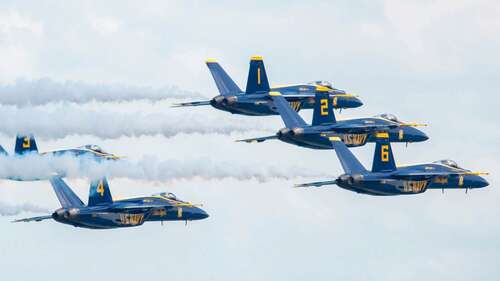
The Soviet Union exited WWII in a very powerful position, having established itself as one of two powers facing off in a new polar geopolitical world. With a broad swath of territory under its direct or subordinate control, it became a huge industrial power. Fortunately for the Soviets, before relations completely cooled, Britain offered Josef Stalin access to its new jet engine technology, which the Soviets immediately began studying to make their own copy. This led to the first Soviet fighter jet, the MiG-15.
The British supplied dozens of Rolls-Royce Nene engines on the condition they not be used for military purposes, and the Soviets reverse-engineered them immediately to create the VK-1 turbojet engine. This was installed in a new airframe featuring swept wings that could reach speeds of up to 678 mph, faster than any contemporary British or American jet, with a superior climb rate. An industrious 12,000 jets were produced by the Soviets, with an additional 6,000 copies made in Poland, China, and Czechoslovakia.
The first combat engagements of the new aircraft occurred over the Korean peninsula starting in 1950 and initially dominated UN forces, using its fast climb rate and high service ceiling to stay out of danger. While pilot skill and military planning ultimately erased the technical advantages, the MiG-15 presented a capable adversary, posing a significant threat to the West. Additionally, with 18,000 copies produced in total, it remains the most widely produced fighter jet in history, making it an indelible symbol of the early Cold War.

